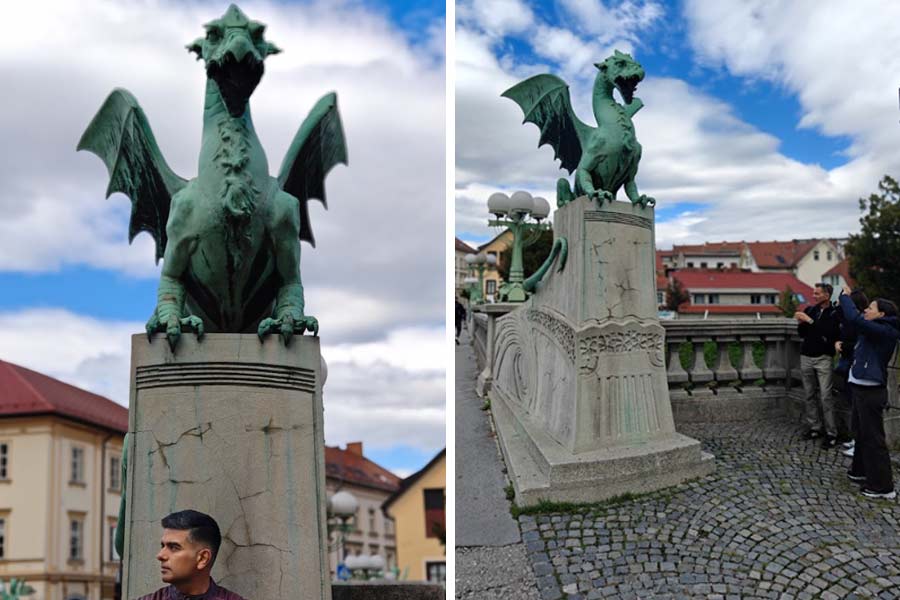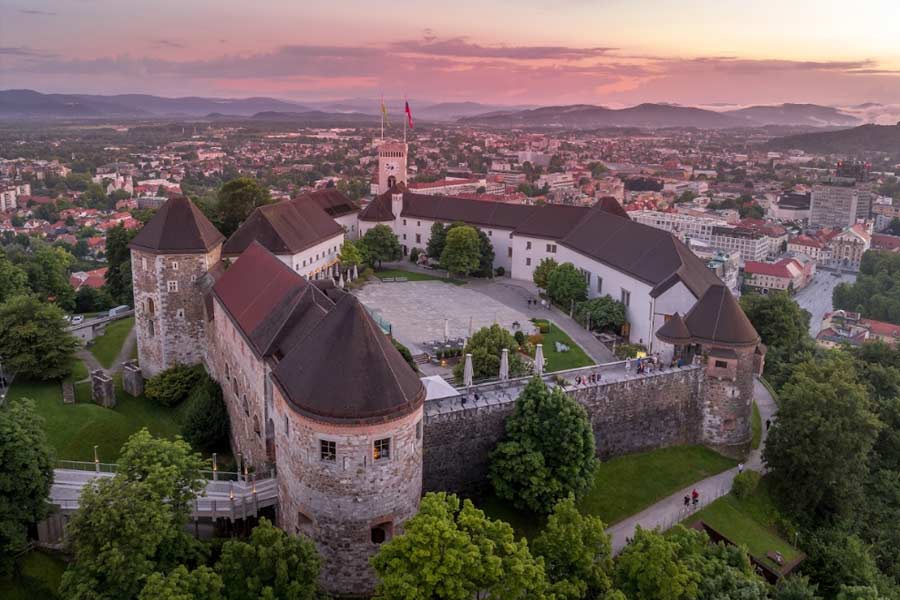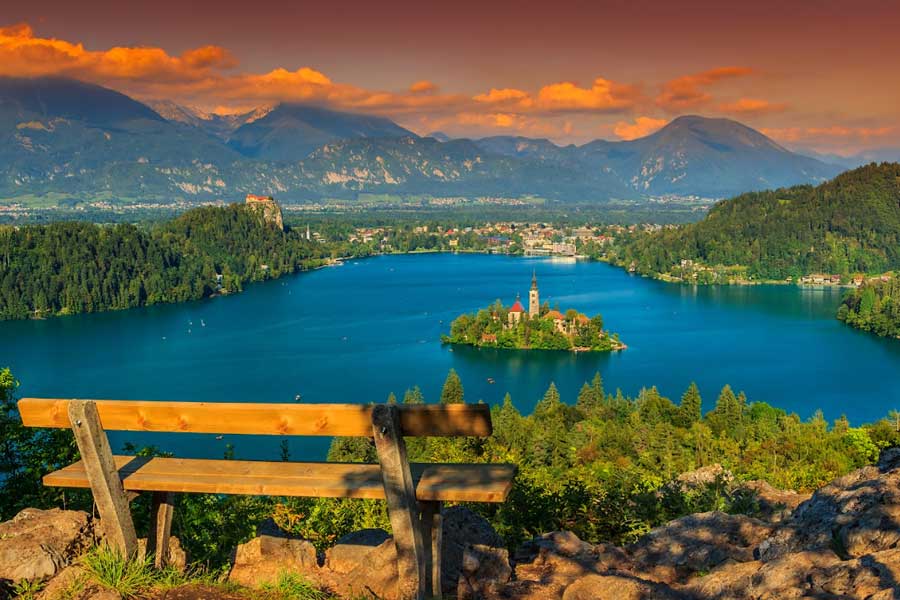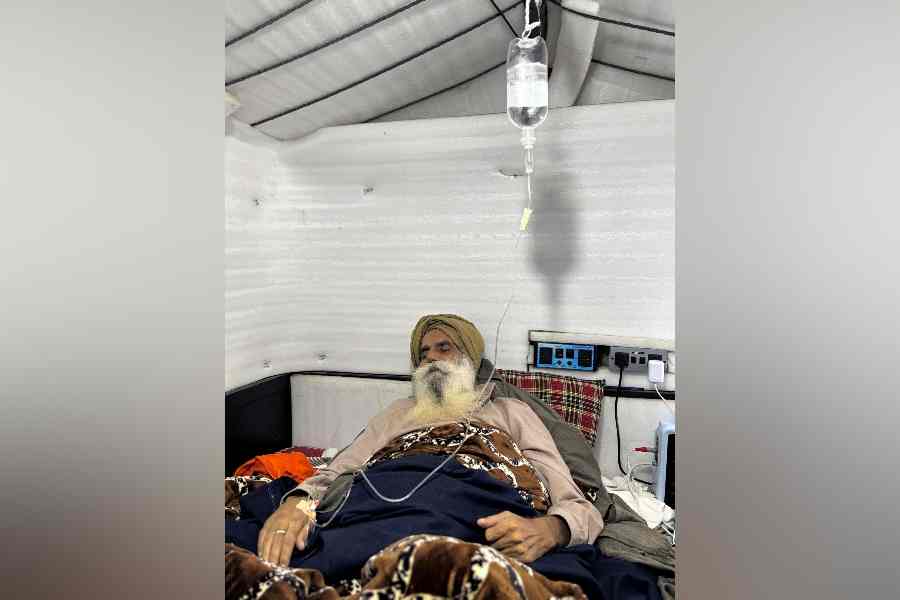A cool autumn breeze wafts through the Slovenian capital as I take in the views from one of Eastern Europe’s most iconic skyscrapers. The parallels between the Prekmurska Gibanica on my table and the City of Dragons didn’t escape me. The layers on Slovenia’s most popular dessert were similar to the multiple layers of Ljubljana that I unravelled over a brief yet memorable 36-hour sojourn. Just like the poppy seeds, apple filling, cottage cheese, walnuts and raisins that reside in the 10-11 layers of the pastry, I experienced multiple facets of a truly engaging city that’s both compact and charming.
House of the Dragon

The dragon has been immortalised in one of the city’s most famous landmarks — the Dragon Bridge Ashwin Rajagopalan
You will hear multiple explanations about the Ljubljana Dragon. From Greek legends to the more recent story about the legend of Saint George. The dragon didn’t just make it to the city’s coat of arms, but has been immortalised in one of the city’s most famous landmarks that was also the starting point of my many walking trails through Ljubljana’s streets. You will have to wait for your turn for the perfect picture with the fierce dragons that watch over the Dragon Bridge. It’s one of the many landmarks that bring the Vienna Secession style of architecture to life. This style of architecture, which dates back to 1897, is often seen as an extension of the Art Nouveau movement that dominated Europe from 1890 to 1910. You can’t go too far in Ljubljana without running into the legacy of Jože Plečnik.
The Gaudi effect

Almost all roads in Ljubljana lead to the Tromostovje or Triple Bridge, designed by Jože Plečnik Ashwin Rajagopalan
Just like it’s impossible to separate Antoni Gaudí from Barcelona, Jože Plečnik’s influence continues to dominate Ljubljana’s architectural landscape. Almost all roads in Ljubljana lead to the Tromostovje or Triple Bridge. It connects the historical medieval town on the southeastern bank with Prešeren Square, the city’s main square that hosts marquee events like the annual Ljubljana Dragon Carnival. Plečnik transformed an old single span bridge into the Triple Bridge in the early 1930s with imposing stone balustrades and beautiful lamps. The stairways from these bridges lead to the terraces along the Ljubljanica River. In 2021, the works of Jože Plečnik acquired UNESCO World Heritage status for what the UNESCO called Human Centred Urban Design that changed the identity of the city. The Triple Bridge was central to this recognition.
Stop, walk, click.

Vurnik House is considered one of the best-known examples of Slovenian architecture Ashwin Rajagopalan
The 10-minute walk from the Ljubljana Bus Station to Attik Rooms, a quaint boutique accommodation near the city centre took much longer. The fatigue of a long bus ride and a large suitcase didn’t deter my photo stops along the way. My favourite stop of them all was at the Cooperative Business Bank, which is also known as Vurnik House by the locals after Ivan Vurnik. Another bold exponent of the Vienna Secession Style of Architecture, Vurnik’s standout architectural contribution (built in 1921) is also considered one of the best-known examples of Slovenian architecture. The building’s facade frescoes are the highlight and add to its visual appeal. My long photo walk also took me to the Town Hall and the Cathedral of St. Nicholas.
Food trails in the Dragon City

(Left) Slovenia’s most popular dessert — the Prekmurska Gibanica; (right) the author outside Klobasarna, one of Ljubljana’s busiest quick serve restaurants Ashwin Rajagopalan
There was no room for my suitcase in Klobasarna, one of Ljubljana’s busiest quick serve restaurants. This was once a famous watchmaker’s shop and now it’s a must do foodie stop for one of Slovenia’s most loved dishes — the Carniolan Sausage. Protected with a geographical indication tag, this delicious sausage is served with a fresh Kaiser roll, mustard and fresh horseradish. I couldn’t have asked for a more satisfying snack to begin my Ljubljana food adventure. This trail also took me to Gostlina Šestica, a popular restaurant with locals and tourists alike. This restaurant dates back to 1776 and serves delicious soups including their signature goulash and mushroom soup. I’d also recommend stopping at Moji Struklji, in the city’s central market that serves more than 20 different types of štruklji, a traditional boiled strudel with creamy or classic fillings.
Take in the views

Ljubljana Castle is one of the most visited locations in the city Shutterstock
After an evening spent sampling local fare and running up the calorie counters, I opted to skip the 70-metre funicular and pounded the steep paths that lead to the most panoramic views of Ljubljana. My destination — Ljubljana Castle. This historic landmark is also one of the most visited locations in the city. The castle’s Outlook Tower and ramparts offer unrivalled views of the city. I didn’t have enough time to explore the Puppet Museum and some of the historical rooms in the castle. That’s the thing with Ljubljana and it’s compact size. As I took in the views of the Ljubljana Castle from the cafe atop the Nebotičnik, the city’s first skyscraper, I realised that I had underestimated the Slovenian capital. I assumed 36 hours was enough to explore this compact city, but just like the many layers of the Slovenian pastry, I still had more layers of the city left to explore. I will be back to finish the job and for more pastry.













